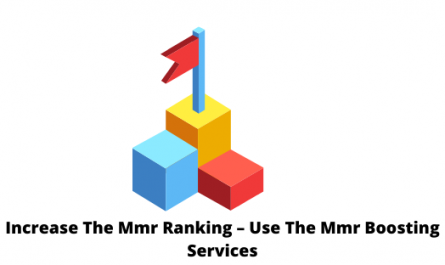What is data-driven cybersecurity?
Introduction
Over the last decade, best cybersecurity practices have shifted from protection to detection and reaction. Today, the focus is shifting to data-driven security. The concept of data-driven cybersecurity provides for more actionable and intelligent computer processes in the sphere of cybersecurity than traditional ones.
Traditional cybersecurity tactics have limits in mitigating threats and reducing associated dangers to businesses and organizations as the volume and complexity of cybersecurity attacks increase. Traditional well-known security solutions such as firewalls, user authentication, and access control, cryptography systems, etc. that might not be effective according to today’s needs in the cyber industry
To address this issue, we need to create more adaptable and efficient security systems to respond to attacks and change security rules in real-time to minimize them. Cybersecurity professionals must analyze a huge amount of data created by multiple apps, and they must generate correct security rules/policies to create such security mechanisms. The demand for cybersecurity expertise has increased manifold, leading to a growth in many institutions offering cybersecurity courses. In this blog, we will discuss data-driven intelligent decision-making to safeguard systems from cyber-attacks.
Privileged Access Management (PAM) is an information security (infosec) mechanism that safeguards identities with special access or capabilities beyond regular users. Like all other infosec solutions, PAM works through a combination of people, processes and technology.
What is data-driven cybersecurity?
Everything that happens in the digital world is documented. A user clicking on a link in their browser, an employee mistyping their password three times, and a file transmitted from one network location to another are all digital occurrences. These digital events can be used to defend organizations against cyber catastrophes, but only if the huge amount of data generated by users, staff, and systems daily can be leveraged.
Data-driven cybersecurity can be defined as a process in which big data is utilized to make informed judgments about a company’s cybersecurity procedures. It includes a plan for responding to a security event and a plan for protecting applications and data. When data is at the centre of a cybersecurity strategy, it is referred to as a data-driven cybersecurity approach.
Due to the data-driven approach, today’s cybersecurity systems have evolved into more adaptable and efficient mechanisms for responding to and mitigating threats. This is only one of many ways data can help an organization’s cybersecurity efforts. Many of the newer security systems are already taking a more data-driven approach. SIEM (Security Information and Event Management) systems are an excellent example of this trend.
Data-driven cybersecurity is also crucial to artificial intelligence in threat prevention and detection. AI has various cybersecurity applications, some of which are deployed by advanced cybersecurity solutions such as TEHTRIS XDR.
Why does data-driven security matter?
Data-centric security is dependent on having the correct data. Without it, understanding what’s going on is a tremendous task. Data analytics refers to analyzing vast, diverse volumes of data that are frequently untapped by traditional analytics software. Data might be unstructured, structured, or a combination of the two. It is used to evaluate past patterns to develop better cyber threat controls.
Traditional well-known security solutions, such as firewalls, user authentication, and access control, encryption systems, and so on, may no longer be effective in today’s cyber business. The issues are that these are normally handled statically by a few competent security analysts, whereas data management is ad hoc.
Analyzing cybersecurity data and developing the necessary tools and processes can effectively defend against cybersecurity incidents. Data-driven security is a practical, feasible, and required solution for enterprises looking to strengthen their cybersecurity posture and protect their infrastructure.
Businesses can do a detailed examination of current and historical data using a combination of big data, machine learning, and artificial intelligence to establish what is “normal.” Based on these findings, firms may tighten their cybersecurity preparations to raise red flags when there is a divergence from what is expected.
If a company has been the victim of a cyber attack, data analysis can assist identify the patterns utilized by the hackers before they obtained access to the network. The organization can then utilize machine learning to ensure that the same incidence does not reoccur.
Data-driven security, on the other hand, does not end there. The next stage is to automate as many processes as feasible so that deviations and dangers may be identified and managed as quickly as possible.
Significant findings from data-driven security efforts
As per the CSO online survey, 84 % of US firms use data-driven approach/big data to detect and prevent cyber-attacks. These businesses also reported a significant decrease in breaches after incorporating big data analytics into their security procedures. Data-driven cybersecurity can provide crucial insights into an organization’s overall cybersecurity activities, resulting in:
- Threat anticipation – Machine Learning algorithms and data analysis can expose cybersecurity issues, helping businesses to anticipate what types of threats to expect. Accordingly, companies can plan to fill these gaps and solidify their cybersecurity posture. For example, very soon, enterprises utilizing TEHTRIS EDR will have a worldwide map of undesired binaries (hidden or running) that should be avoided, allowing them to plan ahead of time with white-listing alternatives.
- Incident and cyber threat analysis – Incidents and threats can be efficiently studied by looking at the underlying data and digging for patterns to determine the actions attackers did or could take while attacking an enterprise. In this aspect, big data can yield considerable results.
- Security architecture – Data-driven security architecture includes data governance for acquired data and data-sharing mechanisms that are most effective in certain industries or businesses. Data can reveal important information about the underlying security architecture and provide suggestions for enhancing it.
- Cybersecurity Analytics and visualization – Data analytics and visualization can help security analysts overcome the complexity and scale issues associated with the huge volume of cyber threats that might be difficult to review using SIEM technologies. Data visualization can help detect trends and anomalies, exposing unexpected patterns that demand an additional investigation. Data-driven visualization can also help in incident forensics, which involves analysts examining log data to understand the sequence of events that led up to an occurrence.
- Managing a security incident – Security incident management thoroughly examines irregular data, unusual systems, and user behaviour. For example, if an incident management team notices a server running slower than normal, they will investigate to determine if it is because of some security issue. They will investigate the matter accordingly. By putting pertinent data at the fingertips of security professionals, a data-driven strategy can help to shorten the time it takes to conduct such investigations.
Final Thoughts
Cybersecurity has recently seen enormous advances in technology and operations, with data science driving the change. Machine learning, a core component of “Artificial Intelligence” (AI), may play a critical role in getting insights from data. Machine learning can drastically change the cybersecurity landscape, and data science is pioneering a new scientific paradigm. Professionals who want to advance their careers in this field can always enrol in well-curated cybersecurity degrees or cybersecurity certification programs offered online. Great Learning offers a diverse range of cybersecurity training courses that include certification to accelerate your learning and professional development. The necessity to learn and construct a data-driven smart cybersecurity model based on machine learning techniques and the popularity of these associated technologies is growing daily.

